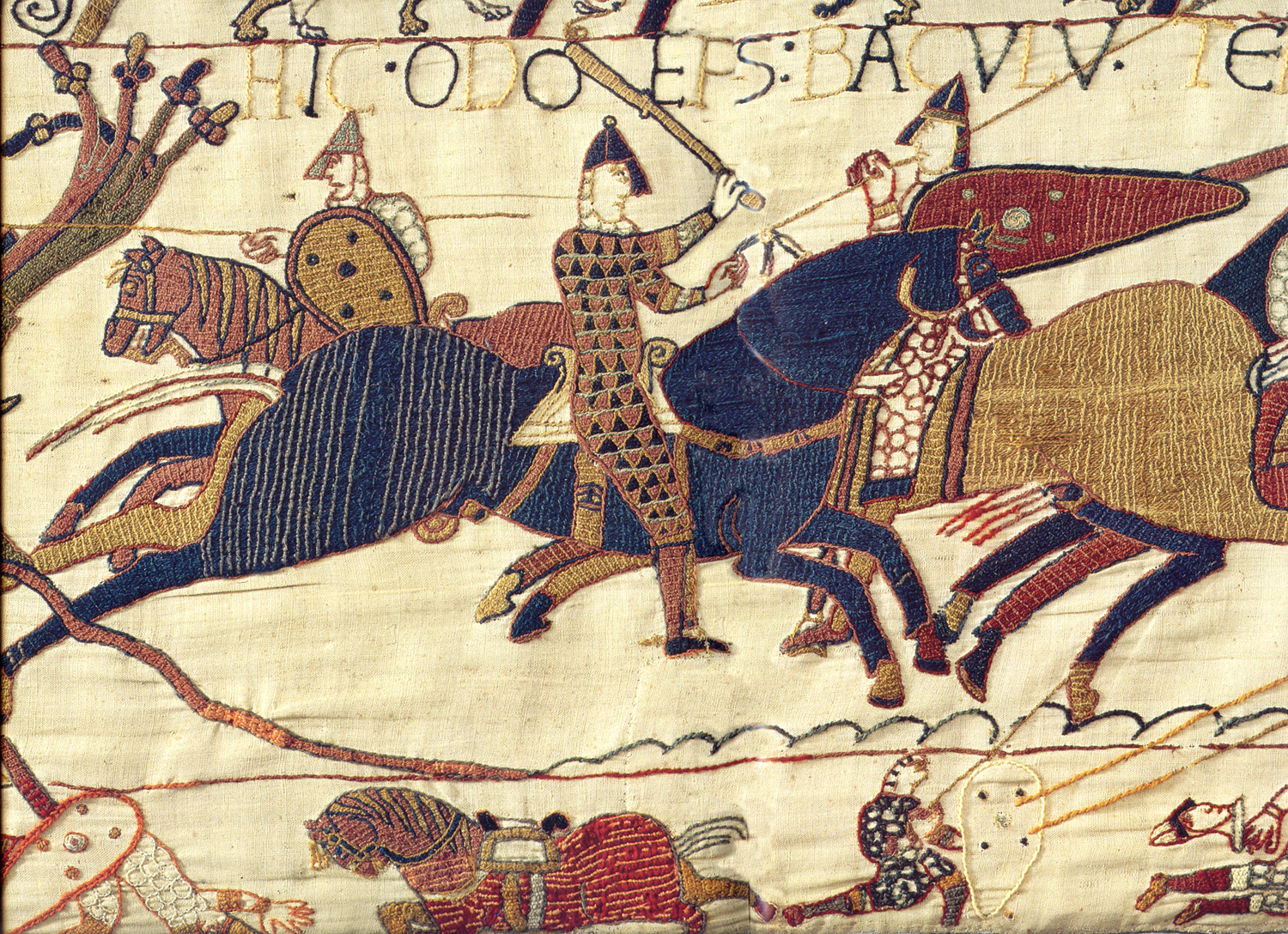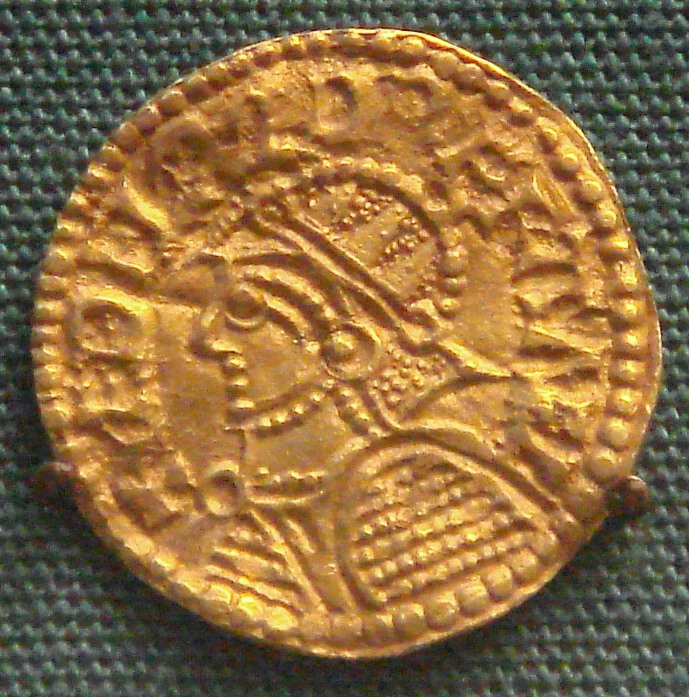|
Ælfgifu
├ålfgifu (also ''├ålfgyfu''; ''Elfgifa, Elfgiva, Elgiva'') is an Anglo-Saxon name, Anglo-Saxon feminine personal name, from ''├”lf'' "elf" and ''gifu'' "gift". When Emma of Normandy, the later mother of Edward the Confessor, became queen of England in 1002, she was given the native Anglo-Saxon name of ''├ålfgifu'' to be used in formal and official contexts.Florence of Worcester: ''Emmam, Saxonica Alfgivam vocatam''; see Latinized forms of the name include forms such as ''Aelueua, Alueua, Alueue, Elgiva, Elueua, Aluiua, Aueue'' (etc.). People called ├ålfgifu: * ├ålfgifu of Exeter, Anglo-Saxon saint * ├ålfgifu of Northampton, first wife of King Cnut the Great. Her name became ├ülf├Łfa in Old Norse. * ├ålfgifu of Shaftesbury, wife of King Edmund I of England * ├ålfgifu of York, first wife of ├åthelred the Unready * ├ålfgifu, wife of Eadwig, king of England ** as ''Elgiva'', the female protagonist of ''Edwy and Elgiva'', a 1790 verse tragedy by Frances Burney * Emma of Normandy a ... [...More Info...] [...Related Items...] OR: [Wikipedia] [Google] [Baidu] |
Ælfgifu Of Northampton
├ålfgifu of Northampton (; 990 ŌĆō after 1036) was the first wife of Cnut the Great, King of List of English monarchs, England and List of Danish monarchs, Denmark, and mother of Harold Harefoot, King of England. She was regent of Norway from 1030 to 1035. Biography Family background ├ålfgifu was born into an important noble family based in the English Midlands, Midlands (Mercia). She was a daughter of ├ålfhelm, Ealdorman of York, ├ålfhelm, ealdorman of southern Northumbria, and his wife Wulfrun. ├ålfhelm was killed in 1006, probably at the command of King ├åthelred the Unready, and ├ålfgifu's brothers, Ufegeat and Wulfheah, were blinded. Wulfric Spot, a wealthy nobleman and patron of Burton Abbey, was the brother of ├ålfhelm or Wulfrun. The family again came under suspicion during the invasion of England by Swein Forkbeard, King of Denmark, in 1013ŌĆō14, and further members were charged with treachery and killed. It is possible that ├ålfgifu was a kinswoman of the wife of ... [...More Info...] [...Related Items...] OR: [Wikipedia] [Google] [Baidu] |
Ælfgifu Of Shaftesbury
├ålfgifu of Shaftesbury (died 944) was the first wife of King Edmund I (r. 939ŌĆō946). She was Queen of the English from her marriage in around 939 until her death in 944. ├ålfgifu and Edmund were the parents of two future English kings, Eadwig (r. 955ŌĆō959) and Edgar, King of England, Edgar (r. 959ŌĆō975). Like her mother Wynflaed, ├ålfgifu had a close and special if unknown connection with the royal Shaftesbury Abbey, nunnery of Shaftesbury (Dorset), founded by King Alfred,Asser, ''Vita ├ålfredi ''ch. 98. where she was buried and soon revered as a saint. According to a pre-Conquest tradition from Winchester, her feast day is 18 May.Lantfred, ''Translatio et Miracula S. Swithuni'': pp. 328-9 n. 299 (Lapidge's commentary).'' '' Family background Her mother appears to have been an associate of Shaftesbury Abbey called Wynflaed (also Wynnfl├”d). The vital clue comes from a charter of Edgar the Peaceable, King Edgar, in which he confirmed the grant of an estate at ''Uppidelen'' ... [...More Info...] [...Related Items...] OR: [Wikipedia] [Google] [Baidu] |
Ælfgifu Of York
├ålfgifu of York (fl. c. 970 ŌĆō 1002) was the first wife of ├åthelred the Unready, King of the English; as such, she was Queen of the English from their marriage in the 980s until her death in 1002. They had many children together, including Edmund Ironside. It is most probable that ├ålfgifu was a daughter of Thored, Earl of southern Northumbria and his wife, Hilda. Identity and background Her name and paternity do not surface in the sources until sometime after the Conquest. The first to offer any information at all, Sulcard of Westminster (''fl''. 1080s), merely describes her as being ŌĆ£of very noble English stockŌĆØ (''ex nobilioribus Anglis''), without naming her,Sulcard of Winchester, ''Prologus de construccione Westmonasterii'', ed. Scholz, pp. 74, 89; Williams, ''├åthelred the Unready'', p. 169, note 30. while in the early 12th century, William of Malmesbury has nothing to report. All primary evidence comes from two Anglo-Norman historians. John of Worcester, a ... [...More Info...] [...Related Items...] OR: [Wikipedia] [Google] [Baidu] |
Bayeux Tapestry
The Bayeux Tapestry is an embroidery, embroidered cloth nearly long and tall that depicts the events leading up to the Norman Conquest, Norman Conquest of England in 1066, led by William the Conqueror, William, Duke of Normandy challenging Harold Godwinson, Harold II, King of England, and culminating in the Battle of Hastings. It is thought to date to the 11th century, within a few years of the battle. Now widely accepted to have been made in England, perhaps as a gift for William, it tells the story from the point of view of the conquering Normans and for centuries has been preserved in Normandy. According to Sylvette Lemagnen, conservator of the tapestry, in her 2005 book ''La Tapisserie de Bayeux'': The cloth consists of 58 scenes, many with Latin ''tituli'', embroidered on linen with coloured woollen yarns. It is likely that it was commissioned by Bishop Odo of Bayeux, William's maternal half-brother, and made for him in England in the 1070s. In 1729, the hanging was r ... [...More Info...] [...Related Items...] OR: [Wikipedia] [Google] [Baidu] |
Æthelred The Unready
├åthelred II (,Different spellings of this king's name most commonly found in modern texts are "Ethelred" and "├åthelred" (or "Aethelred"), the latter being closer to the original Old English form . Compare the modern dialect word . ; ; 966 ŌĆō 23 April 1016), known as ├åthelred the Unready, was List of English monarchs, King of the English from 978 to 1013 and again from 1014 until his death in 1016. His epithet comes from the Old English word meaning "poorly advised"; it is a pun on his name, which means "well advised". ├åthelred was the son of Edgar, King of England, King Edgar and ├ålfthryth (wife of Edgar), Queen ├ålfthryth. He came to the throne at about the age of 12, following the assassination of his elder half-brother, King Edward the Martyr. The chief characteristic of ├åthelred's reign was conflict with the Danes (tribe), Danes. After several decades of relative peace, Danish raids on English territory began again in earnest in the 980s, becoming markedly more se ... [...More Info...] [...Related Items...] OR: [Wikipedia] [Google] [Baidu] |
Uhtred, Earl Of Northumbria
Uhtred of Bamburgh (Uhtred the BoldŌĆösometimes Uchtred; died ca. 1016), was ruler of Bamburgh and from 1006 to 1016 the ealdorman of Northumbria. He was the son of Waltheof I, ruler of Bamburgh (Bebbanburg), whose family, the Eadwulfingas, had ruled the surrounding region for over a century. Uhtred's death by assassination was described in '' De obsessione Dunelmi'' and has been interpreted as the beginning of a blood feud. Lest he be confused with Uhtred, the son of Eadwulf I of Bamburgh, he historically has been referred to as Uhtred the Bold. Accomplishments In 995, according to Symeon of Durham, when the remains of St Cuthbert were transferred from Chester-le-Street to Durham, Uhtred went to Durham with his monks to clear the site of the new cathedral. The new cathedral was founded by Bishop Aldhun, and Uhtred married Aldhun's daughter, Ecgfrida, probably at about this time. From his marriage he received several estates that had belonged to the church. In 1006 King Mal ... [...More Info...] [...Related Items...] OR: [Wikipedia] [Google] [Baidu] |
Anglo-Saxon Name
Germanic given names are traditionally dithematic; that is, they are formed from two elements ( stems), by joining a prefix and a suffix. For example, King ├å├Šelred's name was derived from ', meaning "noble", and ', meaning "counsel". The individual elements in dithematic names do not necessarily have any semantic relationship to each other and the combination does not usually carry a compound meaning. Dithematic names are found in a variety of Indo-European languages and are thought to derive from formulaic epithets of heroic praise. There are also names dating from an early time which seem to be monothematic, consisting only of a single element. These are sometimes explained as hypocorisms, short forms of originally dithematic names, but in many cases the etymology of the supposed original name cannot be recovered. The oldest known Germanic names date to the Roman Empire period, such as those of ''Arminius'' and his wife '' Thusnelda'' in the 1st century CE, and in greater ... [...More Info...] [...Related Items...] OR: [Wikipedia] [Google] [Baidu] |
Ælfgifu Of Exeter
Ælfgifu of Exeter was an Anglo-Saxon saint, whose relics were held by Exeter Cathedral. She is mentioned in the Old English Exeter relic-list as "the holy servant of Christ ... who would daily perform her confession before she went into church".Blair, "Handlist", p. 504 It is possible that she is the 10th-century royal abbess, Ælfgifu of Shaftesbury wife of Edmund I (as one 12th-century writer believed), but it is "more likely" according to historian John Blair that she was not. See also * List of Anglo-Saxon saints The following list contains saints from Anglo-Saxon England during the period of Christianization of Anglo-Saxon England, Christianization until the Norman Conquest of England (c. AD 600 to 1066). It also includes British saints of the Roman Bri ... Notes References * Christian saints in unknown century People from Exeter West Saxon saints Medieval English saints Year of birth unknown Christianity in Devon {{Saint-stub ... [...More Info...] [...Related Items...] OR: [Wikipedia] [Google] [Baidu] |
Frances Burney
Frances Burney (13 June 1752 ŌĆō 6 January 1840), also known as Fanny Burney and later Madame d'Arblay, was an English satirical novelist, diarist and playwright. In 1786ŌĆō1790 she held the post of "Keeper of the Robes" to Charlotte of Mecklenburg-Strelitz, George III's queen. In 1793, aged 41, she married a French exile, General Alexandre d'Arblay. After a long writing career that gained her a reputation as one of England's foremost literary authors, and after wartime travels that stranded her in France for over a decade, she settled in Bath, England, where she died on 6 January 1840. The first of her four novels, '' Evelina'' (1778), was the most successful and remains her most highly regarded, followed by ''Cecilia'' (1782). She also wrote a number of plays. She wrote a memoir of her father (1832), and is perhaps best remembered as the author of letters and journals that have been gradually published since 1842, whose influence has overshadowed the reputation of her fictio ... [...More Info...] [...Related Items...] OR: [Wikipedia] [Google] [Baidu] |
Ælfgar
├ålfgar is an Anglo-Saxon masculine personal name, from ''├”lf'' "elf" and ''gar'' "spear", that may refer to: *├ålfgar of Lichfield (died c. 947), bishop of Lichfield *├ålfgar of Elmham (died 1021), bishop of Elmham *├ålfgar, Earl of Mercia (1030ŌĆō1062), earl of Mercia *├ålfgar of Selwood, saint venerated in later medieval Somerset See also * Algar * Alger (name) * Elgar (other) * ├ålfgifu * Wulfgar Wulfgar, Wolfgar and Wolfger are variants of a Germanic masculine given name meaning "wolf-spear".Beate Varnhorn, ''Das grosse Lexikon der Vornamen'' (Bertelsmann, 2008), p. 309. They may refer to: Historical *Wolfgar (bishop of W├╝rzburg), a 9t ... {{given name, cat=Old English masculine given names Germanic masculine given names Masculine given names ... [...More Info...] [...Related Items...] OR: [Wikipedia] [Google] [Baidu] |
Godwin, Earl Of Wessex
Godwin of Wessex (; died 15 April 1053) was an Anglo-Saxon nobleman who became one of the most powerful earls in England under the Danish king Cnut the Great (King of England from 1016 to 1035) and his successors. Cnut made Godwin the first Earl of Wessex (). Godwin was the father of King Harold II () and of Edith of Wessex, who in 1045 married King Edward the Confessor (). Rise to power Godwin's father was probably Wulfnoth Cild, who was a thegn of Sussex. His origin is unknown but 'Child' (also written Cild) is cognate with 'the Younger' or 'Junior' and is today associated with some form of inheritance. In 1009 Wulfnoth was accused of unknown crimes at a muster of Æthelred the Unready's fleet and fled with twenty ships; the ships sent to pursue him were destroyed in a storm. Godwin was probably an adherent of Æthelred's eldest son, Æthelstan, who left him an estate when he died in 1014. This estate in Compton, Sussex, had once belonged to Godwin's father. After C ... [...More Info...] [...Related Items...] OR: [Wikipedia] [Google] [Baidu] |
Old English Given Names
Old or OLD may refer to: Places *Old, Baranya, Hungary *Old, Northamptonshire, England * Old Street station, a railway and tube station in London (station code OLD) *OLD, IATA code for Old Town Municipal Airport and Seaplane Base, Old Town, Maine, United States People * Old (surname) Music * OLD (band), a grindcore/industrial metal group * ''Old'' (Danny Brown album), a 2013 album by Danny Brown * ''Old'' (Starflyer 59 album), a 2003 album by Starflyer 59 * "Old" (song), a 1995 song by Machine Head *"Old", a 1982 song by Dexys Midnight Runners from ''Too-Rye-Ay'' Other uses * ''Old'' (film), a 2021 American thriller film *''Oxford Latin Dictionary'' *Online dating *Over-Locknut Distance (or Dimension), a measurement of a bicycle wheel and frame See also *Old age *List of people known as the Old *''Old LP ''Old LP'' is the fourth studio album by American alternative rock band that dog., released on October 4, 2019, by UME. The album is the band's first since their 20 ... [...More Info...] [...Related Items...] OR: [Wikipedia] [Google] [Baidu] |




